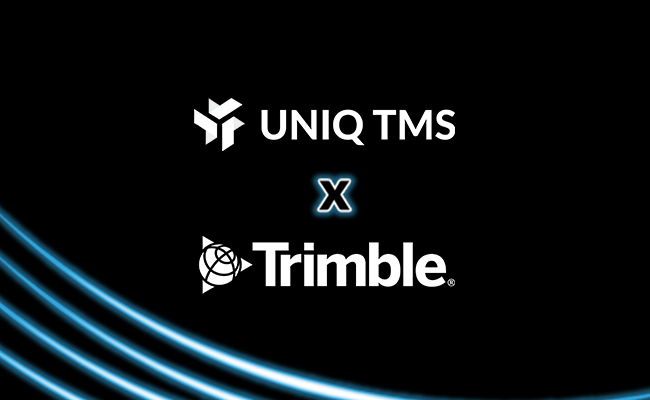
Choosing the right transportation management software is crucial for any business looking to streamline its operations and improve efficiency. But with so many options available, how do you know which one is the best fit for your needs? In this article, we’ll guide you through the process of selecting the best free transportation management software, from understanding its role to assessing your business needs and making the final decision.
Understanding Transportation Management Software
Transportation management software (TMS) is a powerful tool that helps businesses manage and optimize their transportation operations. It enables companies to efficiently plan, execute, and track the movement of goods and services from one location to another. TMS systems offer a wide range of features, from route planning and optimization to carrier management and freight auditing.
The Role of Transportation Management Software
Transportation management software plays a crucial role in improving supply chain efficiency and reducing costs. By automating manual processes and providing real-time visibility, TMS systems enable businesses to make informed decisions, optimize routes, and minimize transportation expenses. They also help enhance customer satisfaction by providing accurate delivery times and tracking information.
Key Features of Effective Transportation Management Software
An effective TMS system should offer a comprehensive set of features to meet your transportation needs. These features may include:
- Route optimization: Finding the most efficient routes for your shipments
- Carrier management: Managing relationships with carriers and tracking their performance
- Freight auditing: Verifying carrier invoices and ensuring billing accuracy
- Real-time tracking: Monitoring shipments in real-time and providing accurate delivery updates
- Reporting and analytics: Generating insights and analyzing transportation performance
When evaluating different transportation management software options, make sure to prioritize the features that are most important to your business.
One of the key benefits of transportation management software is its ability to streamline the entire transportation process. With the help of TMS, businesses can automate tasks such as order entry, load planning, and carrier selection. This automation not only saves time but also reduces the chances of errors that can occur when these tasks are performed manually. By eliminating manual processes, TMS systems enable businesses to focus on more strategic activities, such as building strong relationships with carriers and improving customer service.
In addition to automating processes, transportation management software also provides real-time visibility into the transportation network. This visibility allows businesses to track the status of their shipments at any given time, ensuring that they are delivered on time and in the right condition. Real-time tracking also enables businesses to proactively address any issues that may arise during transportation, such as delays or route changes. By having access to this information, businesses can make quick decisions and take appropriate actions to resolve any potential problems.
The Importance of Cost in Software Selection
Cost is a crucial factor to consider when choosing transportation management software. While free software options may seem attractive, it’s essential to evaluate the true cost and weigh it against the expected benefits.
Understanding the financial implications of software selection goes beyond just the initial price tag. It’s important to factor in potential hidden costs that could arise from choosing a free or low-cost solution. These costs may include customization fees, integration expenses, or even the cost of switching to a different system in the future.
Evaluating the True Cost of Free Software
Although free transportation management software can save you money upfront, it’s important to consider the long-term costs. Some free options may lack critical features or have limitations on usage or support. This can result in hidden costs, such as lost productivity or the need to invest in additional software or services to fill the gaps.
Additionally, free software may not offer the same level of security and data protection as paid solutions. This could expose your business to potential risks such as data breaches or compliance issues, ultimately costing you more in the long run.
Balancing Budget and Quality in Software Selection
When considering your budget, it’s important to strike a balance between cost and quality. While investing in a premium TMS system may be expensive, it often comes with advanced features, comprehensive support, and regular updates. Assess your business needs and determine the level of functionality and support that aligns with your budget.
Furthermore, consider the scalability of the software. A low-cost solution may meet your current needs, but if your business grows, you may quickly outgrow its capabilities, leading to the need for a costly upgrade. It’s crucial to evaluate the long-term value that a software solution can provide to ensure it aligns with your business goals and growth trajectory.
Assessing Your Business Needs
Before choosing any software, it’s crucial to assess your business needs and determine how transportation management software can support your goals and objectives.
Understanding the intricacies of your business operations is key to selecting the right transportation management software. By delving deep into the core of your business, you can uncover specific pain points and challenges that need addressing. This comprehensive approach will not only enhance your decision-making process but also pave the way for a more streamlined and efficient transportation management system.
Identifying Your Transportation Management Needs
Start by evaluating your current transportation processes and identifying areas that need improvement. Do you struggle with route optimization, carrier management, or tracking shipments? Understanding your pain points will help you prioritize the features that are critical for your business.
Furthermore, conducting a thorough analysis of your transportation network can reveal hidden opportunities for optimization and cost savings. By scrutinizing every aspect of your supply chain, from warehousing to final delivery, you can fine-tune your operations and maximize efficiency. This holistic approach to assessing your transportation management needs will set the foundation for a robust and agile software solution.
Aligning Software Features with Business Goals
Consider your long-term business goals and how transportation management software can help you achieve them. For example, if expanding internationally is on your horizon, look for software that supports cross-border shipping and compliance with international regulations. Aligning software features with your business goals will ensure that you invest in a solution that can grow with your company.
Moreover, envisioning the future trajectory of your business can guide you in selecting a software solution that is not only scalable but also adaptable to changing market dynamics. By aligning software features with your strategic objectives, you can future-proof your transportation management system and stay ahead of the curve in a rapidly evolving industry landscape.
Comparing Free Transportation Management Software Options
Now that you have a clear understanding of your needs, it’s time to compare the available free transportation management software options.
Overview of Popular Free Software Options
There are several free transportation management software options available, each with its own set of features and limitations. Some popular choices include [Software A], [Software B], and [Software C]. Take the time to research each option, comparing their features, user reviews, and compatibility with your existing systems.
When exploring these free transportation management software options, it’s essential to delve deeper into their specific functionalities. For example, [Software A] may excel in route optimization and real-time tracking, while [Software B] might stand out for its robust reporting and analytics capabilities. Understanding these nuances can help you make a more informed decision based on your unique business requirements.
Pros and Cons of Different Software Options
Consider the pros and cons of each software option to make an informed decision. Look for reviews from businesses similar to yours and find out how well the software performs in real-world scenarios. Take into account factors such as ease of use, customer support, and scalability to ensure the software aligns with your business needs.
Furthermore, it’s beneficial to assess the long-term viability of these free transportation management software options. While they may meet your current needs, consider how well they can scale alongside your business growth. Scalability is crucial for ensuring that the software remains effective and efficient as your transportation operations expand and evolve over time.
Making the Final Decision
After narrowing down your choices, it’s time to make the final decision.
Conducting a Trial Run with Your Top Choices
Before committing to any software, consider conducting a trial run with your top choices. Many software vendors offer free trials or demos, allowing you to test the software’s usability and compatibility with your business processes. This hands-on experience will give you a better understanding of how the software functions and whether it meets your expectations.
Making the Most of User Reviews and Ratings
User reviews and ratings can provide valuable insights into the software’s performance and customer satisfaction. Look for unbiased reviews on reputable websites and pay attention to both positive and negative feedback. Keep in mind that every business has unique requirements, so weigh the reviews against your specific needs.
Final Checklist Before Making Your Choice
Before making your final decision, create a checklist of your requirements and compare it against the features and capabilities of your top software choices. Consider factors such as cost, functionality, ease of use, scalability, and customer support. This checklist will serve as a final evaluation to ensure that you choose the best free transportation management software for your business needs.
By following these steps and taking your time to evaluate different options, you can choose the best free transportation management software that meets your business goals and delivers a positive return on investment. Remember, the right software can not only streamline your transportation operations but also drive growth and improve your bottom line.
Ready to Transform Your Transportation Management?
Discover how Uniq TMS can streamline your logistics operations, enhance efficiency, and boost your bottom line. Click here to learn more and explore our innovative solutions designed to meet your unique transportation needs.

